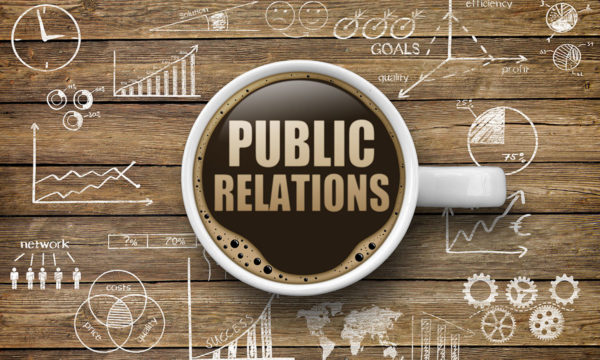The following is a guest post from Mike Duerksen of Buildgood in Canada.
The exercise he proposes is a GREAT way for your organization to uncover (quickly, in my experience) actions you can take next year to help you raise more money and keep more of your donors.
Think of the exercise as making your fundraising healthier & more robust and increasing your organization’s immunity to difficulties.
The little boy isn’t limited by the shape of the cardboard box.
Yesterday it was a secret cave. Today it’s a plane flying through the skies. Tomorrow it might be a pirate ship.
His only constraint is his imagination, not the four walls that box him in.
And that’s the power of constraints: they force creativity.
Right now your nonprofit might be in a cardboard box. And you feel stuck. And you’re waiting for the day when the walls come down again.
But what if the pandemic is giving you a rare chance to think creatively about how you can free yourself of the ways you’ve always done things?
What if you can use the new limits imposed on you to re-imagine the ways you show up in the world?
And what if you can actually improve your fundraising and future-proof your revenue to protect yourself from the next crisis?
Chances are you can…by playing a game of constraints.
What Is A Game Of Constraints?
A game of constraints is a simple exercise where you imagine a scenario that might seem impossible or unlikely.
Then you brainstorm as many ways as possible to overcome the problem.
You’ll be surprised how quickly you can free your mind from thinking:
- “We can’t do that!” to
- “This is tough, but maybe not impossible” to
- “Here’s one way we could respond that would solve the problem”
You can have a lot of fun playing these games and stretching your imagination. But you’ll also feel energized about the opportunities ahead.
You’ll be more confident in your ability to solve potential problems. And you’ll identify where you are weak today, so you can become more resilient for tomorrow.
Ready to play some games?
5 Games You Can Play Today
Here’s a few scenarios to get you started…
1: A WORLD WITHOUT THE MAIL
Imagine a world where the postal service is no longer operating. From one day to the next, you can no longer reach your donors by mail. How will you communicate with them?
This is a great game to start with because we have seen postal strikes before. And when COVID hit, some print houses weren’t sure at first if they would keep operating
Chances are the options you came up with were to email, call or use social media to reach your donors.
Now ask yourself: How many emails do we have on file? What’s our email open rate? How many phone numbers? How many cellphone numbers? What do we need to do today to make sure we increase emails and phone numbers on file?
What you’ll discover: You likely need a better strategy to harvest donor email addresses and phone numbers.
2: A WORLD WITHOUT EVENTS
Imagine a world where you are no longer able to host any fundraising events in person. How do you engage current donors so they feel like they are still part of a community of givers? How do you attract new donors? What tools or approaches do you use instead?
This one hits close for many nonprofits right now. Some are finding success (and profitability!) moving to online formats.
Others are discovering that simply moving your event online is not a sound strategy — you have to re-invent the entire experience.
And some are letting go of events altogether, replacing them with something else.
What you’ll discover: There are many ways to draw donors closer to your mission outside of special events that may yield higher net revenue, save you time and give your donors a greater sense of connectedness.
3: A WORLD WITHOUT GRANTS & GOVERNMENT FUNDING
Imagine a world where you can no longer get funding from public and private foundations, governments and other institutional funders. How will you raise your yearly budget? How much more will you need to raise from individual donors? How many more individual donors do you need to get there?
This is one of the most important games you can play if you rely on applying for large grants and government funding every year.
Priorities for funders change. Governments change. Key relationship players at foundations change.
Don’t wait until you are denied funding before creating a strategy to diversify your income.
What you’ll discover: You may need to invest in your individual giving program a lot more in the coming years to protect your mission from future volatility.
4: A WORLD WITHOUT MAJOR DONORS
Imagine a world where the largest gift you can secure from anyone is $10,000. How many $10,000 donors would you need? How many $5,000 donors? Or $2,500? How would you identify who in your donor file can upgrade to give close to $10,000? How would that change the way you treat your donors?
Some organizations are getting the highest gifts in their history right now. Others are seeing major donors sit back a bit while they evaluate the situation.
Meanwhile, foundational donors — those in the “mass” file — are stepping up. Many just needed to be challenged with a clear and urgent problem to solve.
What you’ll discover: You likely have hidden value in your middle donor file — and you likely need a strategy to help each donor in your mass file give the best gift they can.
5: A WORLD WITHOUT DONOR ACQUISITION
Imagine a world where you can no longer acquire new donors. All you have to work with is your existing records in your database. How will you ensure your active donors don’t lapse? How will you convert your loyal donors to monthly givers? How will you upgrade your active donors to middle donors? How will you upgrade your middle donors to major donors? How will you re-activate your lapsed donors?
The point of this game is to help you realize that you can grow the value of your current donor file. You just need to pay some attention to the donors you’re at risk of losing.
Because the donors you already have are a lot more valuable than the ones you hope to acquire.
After playing this game, you’ve probably identified a few ways you can become a smarter fundraiser using the resources at hand.
What you’ll discover: You have a lot of room to improve your donor retention, and win back donors who haven’t engaged in a while.
Your Next Steps: Play A Game With Your Team
Now it’s your turn.
- Pick one of the games above. Or create your own scenario. Then gather your team.
- Split into smaller groups and brainstorm. Make sure each person knows there are no bad suggestions, as long as they stay within the given constraints.
- Share your answers. Have each team read out their answers to each other.
What you’ll end up with is an invaluable source of raw ideas that will help you uncover better ways to serve your donors, make your fundraising more resilient and position your nonprofit for growth.
And you’ll notice your mindset will shift.
You’ll feel more prepared to meet this moment in time. You’ll be more optimistic about your ability to raise funds.
You’ll start to see the cardboard box you’re in not as a limitation, but as an opportunity to create something new.
And you’ll feel more confident that you can emerge stronger…thanks to the power of constraints.
Big thanks to Mike for letting us share his post with you. And if you’re interested in more from Mike, here’s a link to his podcast that’s focused on practical fundraising tips and strategies.







